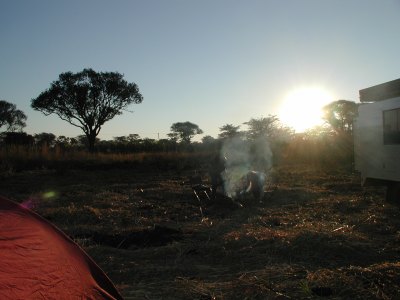
Sunrise in the Eclipse Camp

The first sunrays on the camp. Most are still asleep.
For those of you who do not want to read it all:
Preparations | Partial phases | Totality | Partial phases | After the eclipse
There are more pictures to come! Please hang on!
Finally the day has come. The Sun rises in a perfect morningsky and now with the first sunrays on this freezing cold morning in the highlands north of Lusaka nobody wants to stay in his tent. Everyone is hectic, breakfast happens in between, everyone prepares for his special eclipse programme. Again pictures tell a better story than words ...

Sunrise in the Eclipse Camp

The first sunrays on the camp. Most are still asleep.
The eclipse will take place in the afternoon, but nobody wants to stay in his sleepingbag. At 7 a.m. most of us are up and start preparing the carefully chosen eclipse observation programme.
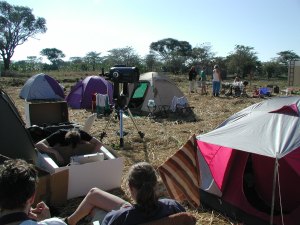
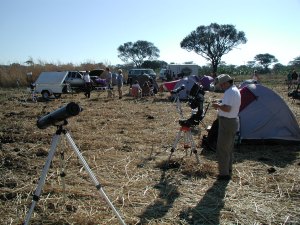
Everyone is putting up their equipment - not an eay task in
the tall grass
The preparations for a solar eclipse are a fascinating event. In theory one knows every move, but then you want to change something or try something new and you end up improvising. Over here someone is making a last minute solar filter, over there a camera is mounted on a tripod that was never made for this purpose.
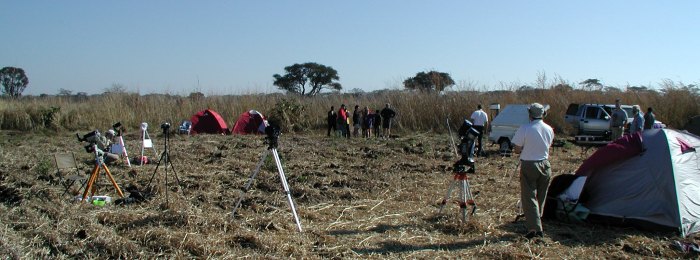
The eclipse camp is ready. But there is still a lot of work ahead of us.
Now let's get down to serious business! The three hours from the hasty breakfast to the first contact pass in no time. At the moment of the first contact observers and photographers get busy.
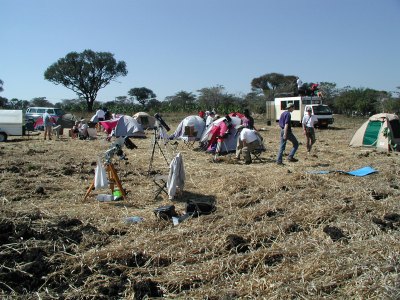
Exciting moments before the first contact!
It is the time of rising excitement. First we still follow the movement of the Moon and enjoy one of many eclipses of sunspots. The whole event is still only a visible impression and without solar glasses you do not yet notice that something is different on this day.
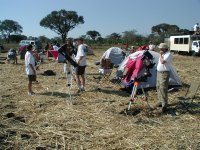
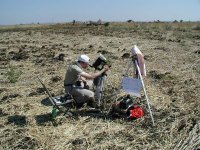
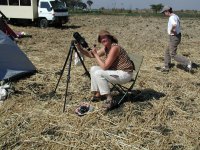
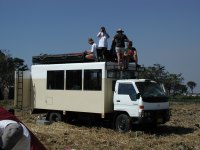
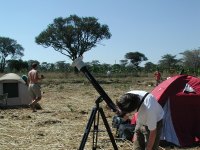
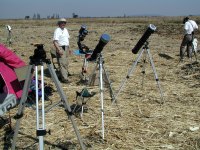
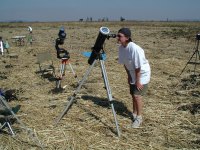
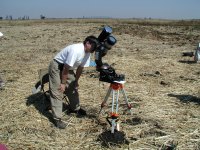
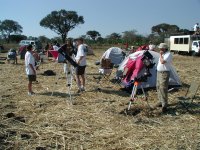
Watching the eclipse
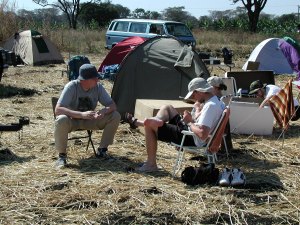
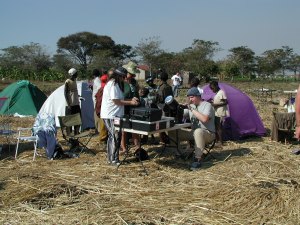
But there should not be too much stress involved, and
neighbourly help is also important.
After the sun has been eclipsed by more than 50% nature changes and the eclipse becomes an event for almost all senses. The light gets pale, colours lose their intensity and everything is bathed in a strange, subdued light where we and our equipment cast hard and cold shadows.
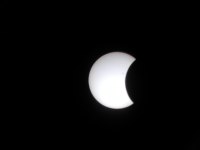
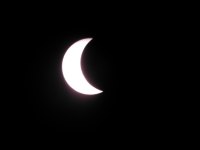
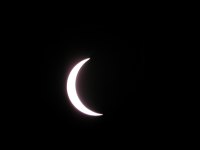
The Sun vanishes. A few shots through the little 3" Newton ...
In the telescope the Sun is only a thin crescent. We notice the drop in temperature. The 24° C (75 F) in the shade are gone. Sweaters and second T-shirts are unpacked. The birds' songs become rarer. Roosters start to crow, something which can otherwise only be heard in the morning or evening.
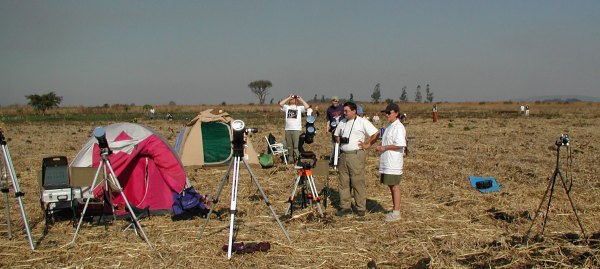
In the strange, pale light of the eclipse (which does not show well
on this photo).
Only five more minutes to second contact. It is dark. Not as dark as in the night when you need a torch to find your lost equipment, but dark enough. Sunglasses are not necessary any more. A last photo of the wafer-thin crescent of the Sun and then down with the solar filters. It is bright, but I can risk short glimpses to see if - yes, it does move! The crescent Sun gets shorter and shorter in quick motion and ---
Second contact! A short diamond ring phenomenon and then it is there: the eclipsed Sun! Shining brightly - the corona, probably brighter than at most other eclipses. To the left Jupiter can be seen clearly. The sky is a medium blue, not bright but not dark either. At first we don't see any other objects besides Jupiter.
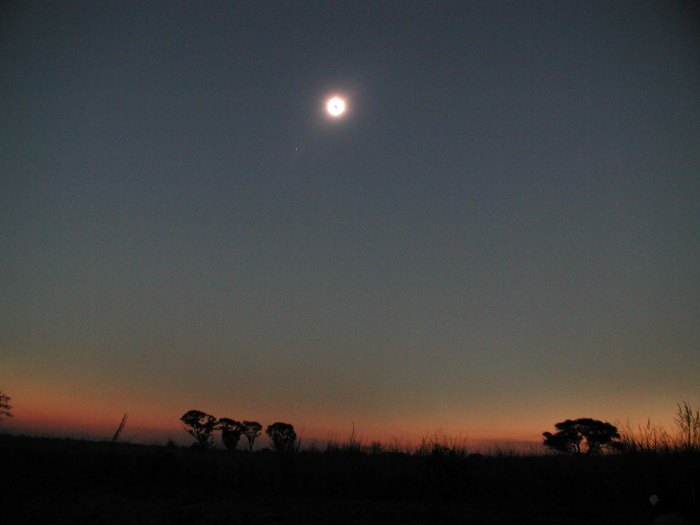
Totality!
Ok. The few photos with different exposures are done. Now a first look through the binoculars. Fantastic! The corona is circular and numerous radial streamers reach out far more than one solar diameter. And then the prominences. Several can be seen in the binoculars. But one is exceptionally bright and is hoovering above the rim of the Sun. A look through Doris' 3" Newton - unbelievable! The prominence is shining like a bright red jewel in the cool green of the corona. The streamers go far beyond the field of view of the 21mm Pentax eyepiece. The corona is too big.

Eclipse pictures by Wolfgang Weiser, 10" LX-200

Eclipse pictures by Alexander Pikhard, 500m Pentagon telephoto lense
Away from the telescope. Just looking with the unaided eye. Blue, darkblue, I cannot see any stars, just Jupiter. Others say they can see Betelgeuze. Marc, who had one eye covered during the partial phases, sees a lot of stars (Sirius, Canopus, Rigel, Betelgeuze, a.s.o.) The horizon is a yellowish orange all around us. We are in the centre. The eclipse is bright, brighter than the one of 1999. But that could also be due to the clouds then.
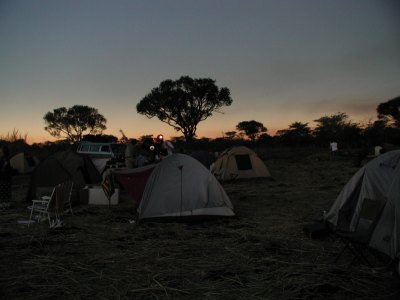
Observing during totality
I should go back to the camera. What? Only four more seconds? A glimps at the Sun. A flash - a wonderful diamond ring! I should take a picture. Hectic handling of the camera. Did it work?
Totality is over. Almost four minutes. Long enough to enjoy besides taking photos and yet much too short ...
That was the third contact. It is light again. No trace left of the pale light. We got used to the dark. Sunglasses are not yet necessary. A photo of the wafer-thin crescent. Click. Great. Now the tension is gone. We stand up, hug each other, are just happy. None of us stops watching till the fourth contact happens.
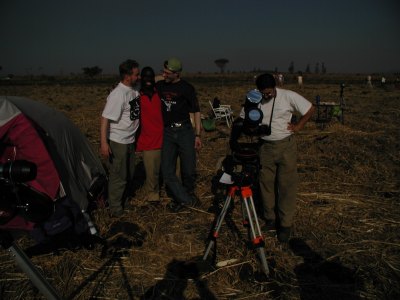
Not during, but immediately after totality!
We did not realize how dark it really was
only moments after third contact.
We are wound up. Slowly we take down the equipment, at least what we do not need for the evening. Talking, exchanging experiences and impressions. It was perfct. No cloud in the sky, it could not have been any better. And yet, maybe because of that many are talking about a journey to one of the next eclipses. Maybe the annular eclipse in Spain in 2005 or the next total eclipse in the North of Africa or Turkey in 2006.
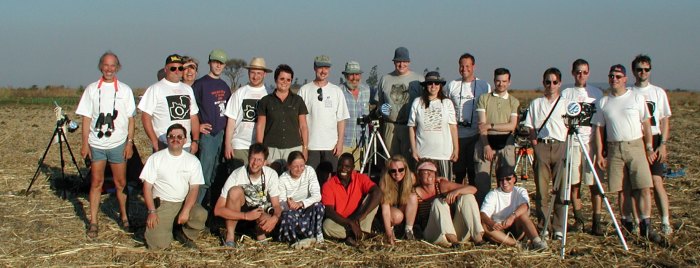
One experience is shared by many of us: You must see a total eclipse. If you just take pictures, you miss the best part.
The Sun sets at 17.43 local time with a picturesque sunset. Once more the cameras are busy. A day full of wonders ends. The memories will stay ...
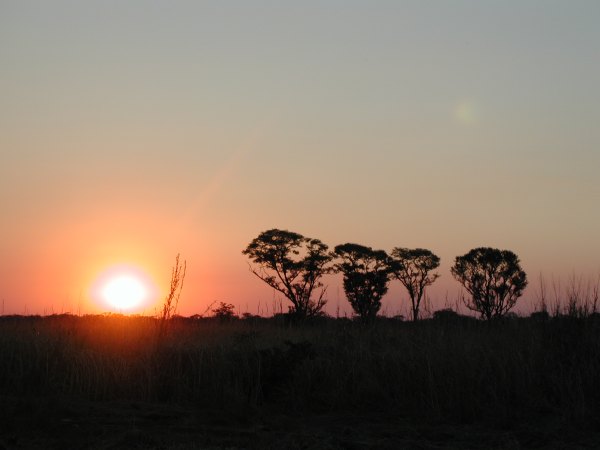
In the evening we get back to our telescopes. The southern sky is
waiting for us. We are not tired and will not be so for quite a while.
Observation report in German: click here. .
[ back | Start | Tour | Team | Astronomy | Acknowledgements | next ]